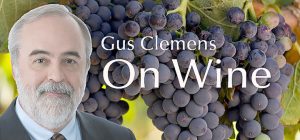Fermentation ends. Final decisions on wine must be made: to age wine and in what vessels.
Red wines age in a variety of vessels: wooden barrels of various sizes, concrete, clay, glass, and stainless steel. Each vessel influences wine in different ways.
Wooden barrels, usually oak, have the most noticeable effect. Large barrels influence the wine the least because less wine is exposed to wood. Small barrels affect wine more because wine has more contact with wood. Vanilla is major flavor oak imparts to wine, caramel a major aroma.
The number of times a barrel is used also affects the wine. New wood influences wine the most, by third or fourth use, effects are significantly diminished. Many winemakers use an array of new and aged barrels to fine-tune oak influence. They also can age some wine in wood and some in other vessels.
Unlined concrete and clay tanks soften wine by reducing acidity through oxygen exposure. Stainless steel imparts no flavors.
Time is biggest influence on flavors in red wine. Longer a wine rests, in whatever vessel, the more chemical reactions occur. Many describe aged wines as being smoother and more nutty. Various wine regulations require aging. Reserve wines typically have at least one more year of aging than non-reserve wines.
Barolo wine, made with nebbiolo grapes in the Piedmont region of northwestern Italy, must be aged a minimum of 18 months in wood, then another 18 months in bottle. Riserva barolo must age at least 62 months. Quality barolo ages 10 years or more. Aging is critical—a barolo that is not aged is too tannic to be enjoyed.
Among other great red wines, Bordeaux efforts commonly benefit and improve with decades of aging. Some whites—riesling and sauternes—benefit with long bottle age.
Aging wine—the French term is élevage—is vital to high quality wine. The French term sums it up best. The word means “bringing up” or “raising” wine from its raw, disjointed state to a point where it can be enjoyed.
Next week: Finished product.
Tasting notes:
• Bonterra Sauvignon Blanc, North Coast, California 2018: Excellent introduction to sauv blanc. Good, crisp acidity with good fruit. Easy drinker. $13-15 Link to my review
• Bodegas Virxe de Galir Pagos del Galir Godello 2017: Vivid, bright, fresh expression of Spanish white grape. Comes from Valdeorras, the world’s top region for godello. $17-19 Link to my review
Last round: What do you call a paper airplane that can’t fly? Stationary stationery. Pour some aged wine and chuckle.

